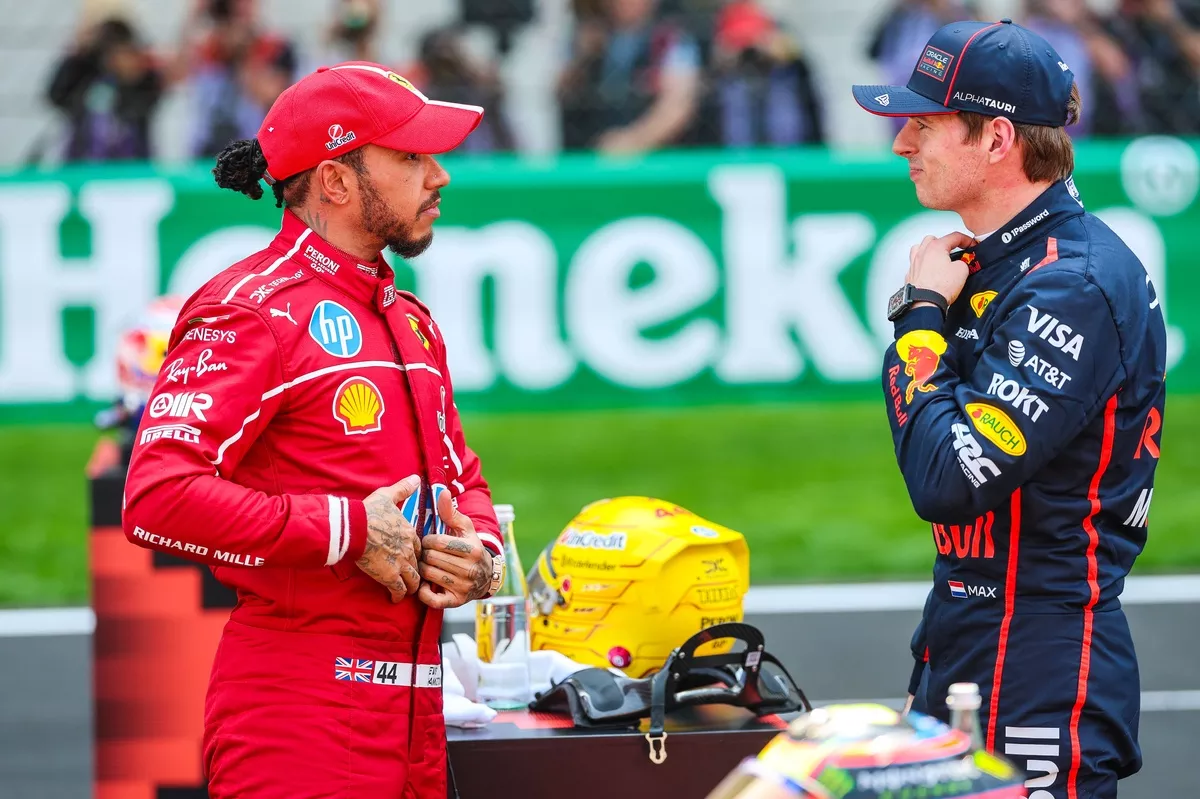
Hamilton Edges Verstappen on Forbes’ Highest-Paid Athletes List
When Winning Isn’t Just About Racing
There are moments in sports when competition spills far beyond the game, the field, or in this case — the track. In Formula 1, where the championship fight is relentless, there’s another kind of scoreboard that matters: the bank account. And this year, Lewis Hamilton has claimed a small but telling victory over Max Verstappen — not on the podium, but on Forbes’ 2025 list of the world’s highest-paid athletes.
Two Champions, Two Paychecks
According to the latest Forbes rankings, Hamilton brought in a cool $80 million over the past 12 months, putting him at joint 22nd on the global earnings list, tied with Mexican boxing icon Canelo Álvarez. Just two spots behind, at 24th, sits Max Verstappen with $78 million to his name.
These numbers aren’t surprising — both drivers are at the very top of their game and represent two of the most valuable names in motorsport today. But the way they earned their millions tells a much deeper story about branding, longevity, and the modern athlete’s role as a global business entity.
Verstappen: Track King, Salary Giant
Let’s start with the Dutchman. Verstappen’s $78 million comes predominantly from his contract with Red Bull Racing — a staggering $72 million of it, in fact, was earned through his base salary and bonuses. That’s what dominance gets you: a record-setting season, back-to-back titles, and the highest salary in F1 history.
Verstappen’s other income — around $6 million — stems from endorsement deals, merchandise sales, and limited commercial appearances. He keeps his circle tight and his image focused: the ruthless, no-nonsense racer. That works for his fans and his brand. But it also places a ceiling on his off-track value — at least compared to Hamilton.
Hamilton: The Brand, The Business
Lewis Hamilton, on the other hand, continues to master the balance between racing and relevance. On-track, he may not have matched Verstappen’s results over the past few seasons, but financially, he’s still a global force.
Hamilton earned $60 million from racing — still a mind-blowing figure, but notably less than Verstappen’s. Where he pulled ahead, however, is everything else: his brand partnerships, investments, and fashion ventures added another $20 million to his total.
Hamilton has endorsement deals with giants like Tommy Hilfiger, Mercedes-Benz, and Monster Energy. He’s launched fashion lines, starred in campaigns, and even dipped into venture capital. Whether it’s promoting plant-based food or backing tech startups, Hamilton has positioned himself as more than just an athlete — he’s a full-fledged brand.
The Broader Picture: Who’s Really Winning?
It’s tempting to look at these figures and think Verstappen is getting short-changed, but that’s not quite the case. He’s young, immensely talented, and laser-focused on racing. His commercial profile is growing, and as he matures, so will his marketability.
Hamilton, in contrast, is a veteran of the game — both on and off the track. He’s spent over a decade cultivating an image that resonates beyond motorsport. His off-track earnings have now reached a point where they can close the gap or even surpass younger, higher-salaried rivals.
And in today’s landscape, that’s the game. The modern sports star isn’t just judged by titles — but by influence, investment, and impact.
Formula 1’s Place in the Money Game
While both Hamilton and Verstappen made the cut, they’re swimming in a pond dominated by other sports. Forbes’ 2025 list was topped, once again, by Cristiano Ronaldo. The Portuguese superstar pulled in a jaw-dropping $275 million, thanks largely to his eye-watering deal with Saudi club Al-Nassr and a never-ending stream of sponsorships.
Stephen Curry followed with $156 million, bolstered by NBA earnings and tech investments. And in third? None other than Tyson Fury, whose $146 million haul was boosted by a Netflix special and record-breaking fights.
Even in 53rd place, NFL quarterback Russell Wilson banked $53.6 million — enough to top the list just eight years ago. But the bar keeps rising. According to Forbes, “breaking into this exclusive club has never been harder.”
Why It Matters
Formula 1 has seen an explosion in popularity in recent years, thanks in part to Netflix’s Drive to Survive, increased U.S. interest, and a new generation of charismatic drivers. Hamilton and Verstappen are at the center of that storm.
The money they’re making reflects the sport’s growth — and its challenges. With cost caps in place and team budgets under scrutiny, drivers are one of the few elements still operating under big-money freedom.
But what we’re really seeing is the evolution of athlete economics. Verstappen is the prototype of the elite competitor — all business, all results. Hamilton is the blueprint for legacy-building — transcending the sport to become a cultural icon.
What’s Next?
With Hamilton making the high-profile move to Ferrari in 2025, his marketability is likely to soar once again. A new chapter with F1’s most legendary team, new colors, new fans — the story practically writes itself. Expect even more lifestyle content, global partnerships, and business ventures in the years ahead.
Verstappen, meanwhile, remains the rock at Red Bull. He’s dominant, comfortable, and entering his prime. If he decides to lean harder into commercial work, there’s no limit to how far his brand can go.
Final Lap
So yes, Hamilton made $2 million more than Verstappen this year. And yes, he did it while being technically out-earned on the track. But in the grand scheme, that $2 million is less about money — and more about evolution.
In today’s sports world, winning is no longer just about the finish line. It’s about the follow-through, the footprint, and what you build when the helmet comes off.










































































































There are no comments yet. Be the first to comment!